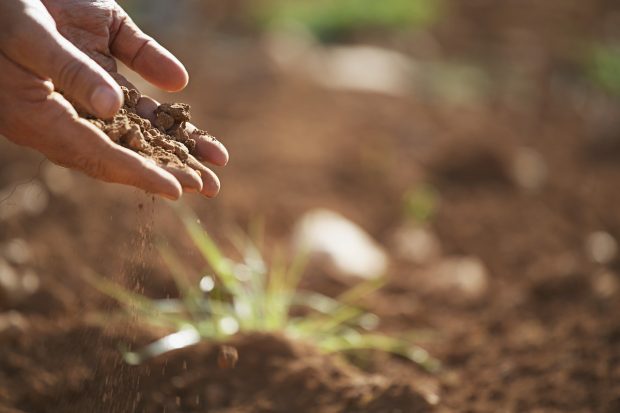We’ve all stopped to admire a beautiful garden at some point in our lives. It might have had incredible colours, unusual plants, or just a really stylish layout. Maybe it had trees and shrubs or maybe it was quite a modest space, with a simplicity of form. There are all kinds of great landscaping designs and cool gardening tricks and no two yards are exactly the same.
This is one of the reasons why so many of us love to get our hands in the soil and create something special. More often than not, though, all great gardens share a common feature. They have a gorgeous, perfectly maintained lawn. Healthy, robust grass provides not only striking colour, but texture, dimension, shape, and decoration as well.

This guide to taking your lawn from seed to luscious, healthy grass will put you on the right track to success.
Step One: Pick Your Seed Variety
It is really important that you pick the right type of lawn seed. This is the building blocks on which your grass will be built, so it needs to be a good choice. It should be an appropriate match for your location, soil type, and plans for the space. Think about whether the grass is likely to get a lot of sun or be partially in shade. Are you going to be walking on it a lot or will it be largely decorative?

Step Two: Prepare the Soil for Sowing
The first thing that you need to do is decide what size and shape you want the lawn to be. It might help to mark it out in some way. Remove any large rocks, stones, or debris. You may also have to fill in low spots and troughs with a bit of soil. For very compacted ground, a tiller is needed to rough up the earth and get it ready for planting. The aim is to leave the soil in smallish particles (around pea size), so that it is not too rough for the seeds, but it also provides plenty of protection.

Step Three: Create a Level Surface
The ideal conditions for a lawn are a flat, even surface without too many inclines or bumpy bits. To achieve this, you’re probably going to have to spend a long time raking. You will keep coming across rocks and stones and having to rework the ground, but it is really important that you don’t stop until it’s nice and level. The more nurturing the conditions, the better the chance your grass will have of growing up big and strong.
Step Four: Seed and Feed on the Same Day
Ultimately, it doesn’t really matter if you distribute the seeds or the grass food first, as long as they both go on fairly close together. Ideally, you want to be using a rotary spreader, but it is certainly not unheard of for amateur gardeners to get a good result seeding by hand. This is less reliable, so give your lawn the best chance by taking it slow and covering the space as evenly as possible.
Step Five: Cover with a Layer of Topsoil
If you live in an area where rain is likely, you are strongly advised to lay a thin section of topsoil over the seeds and the lawn food. This will prevent the vulnerable seeds from being washed away. It is also helpful if you live in a region with high winds or there’s a chance that anybody else might walk over the ground while they are trying to take root.
Step Six: Lightly Water and Give Plenty of Love
Now, all you need to do is lightly water the grass seeds 2-3 times every day. Keep this up until you can see that they have started to grow and become a bit tougher. Once the lawn is flourishing, reduce the frequency and water 1-3 times per week.
